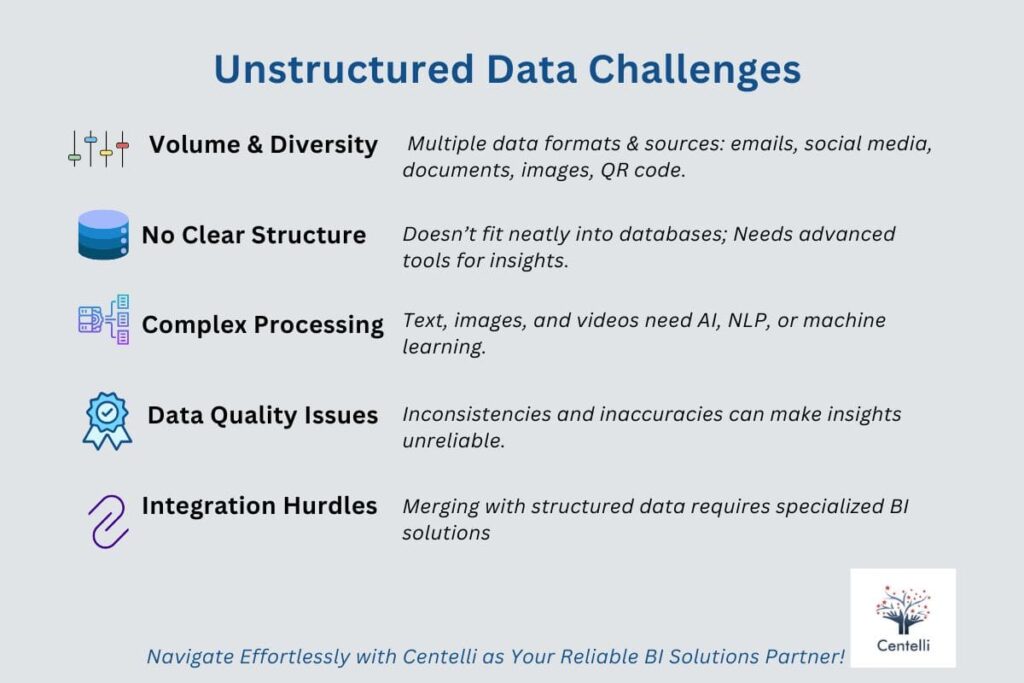
- Business Intelligence
- Written By Aneesh Gupta
Leveraging Unstructured Data for Business Efficiency
02-Jun-2017
Organizations are increasingly embracing data analytics with the aim of innovating. Yet, leveraging unstructured data to the fullest is a struggle for many.
This could be due to data complexities, processing challenges, and other systemic issues. Consequently, while many companies are already adopting big data for specific applications, the majority still work only with structured data.
However, the future belongs to those who develop the ability to leverage semi-structured and unstructured data as well. In a nutshell, a comprehensive and modern BI approach.
2 Key Challenges of Unstructured Data +Solutions
Organisations that try tackling unstructured data come across two common challenges:
- Ability to consolidate data in a place that can facilitate analysis
- Joining data across multiple sources, some with structure and others without, together
How to fix these?
1. The first issue can be solved by building a central repository, such as a data lake. We recommend building these repositories in the cloud.
Key benefits: You can scale on demand and avoid any upfront investment in infrastructure.
2. The vast amount of data variety also mandates successful unification to ensure that organisations get the desired results.
Why?
Repositories or Data Lakes can’t help solve this conundrum, despite the fact that these offer more flexibility than traditional data warehouses have ever provided.
It is now possible and a lot more affordable to embrace information processing, get faster access, and take advantage of the advanced capabilities of modern insight engines.
What If a Business Isn’t Primarily Data-Reliant?
Many businesses rely on big data, even if their services/products aren’t primarily data reliant. The reason is that Big Data tools and BI services let them unlock huge market advantages without making massive financial investments or long development cycles.
So, now they are also focused towards using up their vast reserves of disparate, unstructured data. This is a huge shift!

Here’s how it all plays out:
- Structured data provides the ability to analyze key performance metrics, income, and revenue, along with other operational data.
- Unstructured data, on the other hand, reveals critical insights into how business is truly conducted.
- Together, they offer valuable discoveries, deeper knowledge of internal processes, and a competitive edge.
Unstructured Data Is The Recipe To The Secret Sauce
Businesses that understand and invest in the success of their BI initiatives must also realize the potential of unstructured data and find the best ways to tap into it for their victory.
No organization can succeed in the long term without leveraging unstructured data alongside structured data.
The most thrilling promise of Big Data and BI solutions is that they can bring together this unstructured data and empower businesses and organisations with much better decision-making.
That said, leveraging your unstructured data assets should not be daunting or half-baked!
Which means you need the right tools and applications. You could even opt for process-centric data analytics for granular insights, enabling deeper understanding and more precise strategies and planning.
Here at Centelli, we offer a wide range of unstructured data solutions, addressing all your business information challenges and solving them effectively. We are an experienced business intelligence consulting firm who can help you employ BI suited to your business needs.


